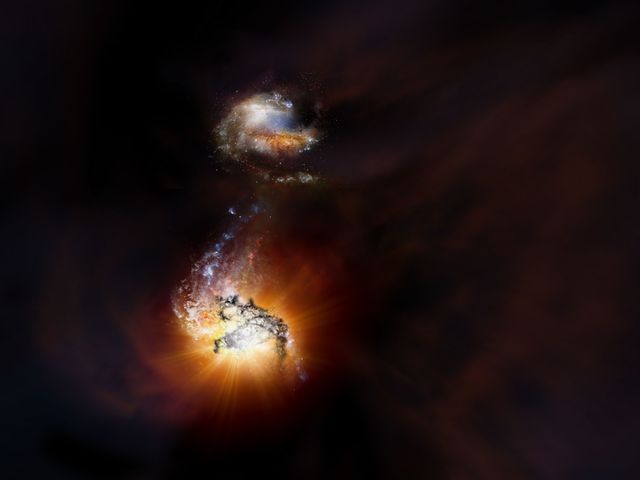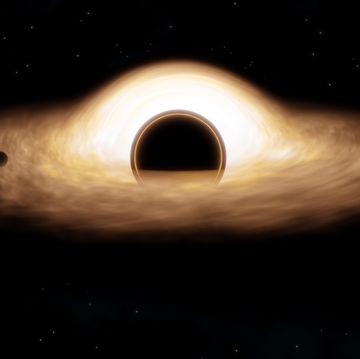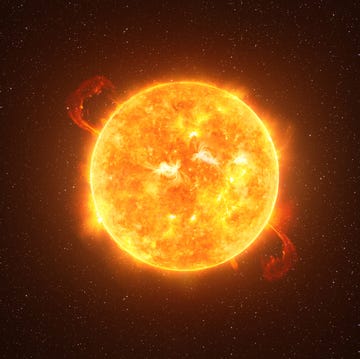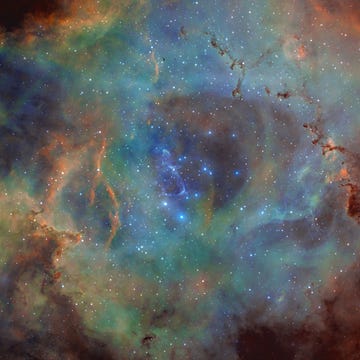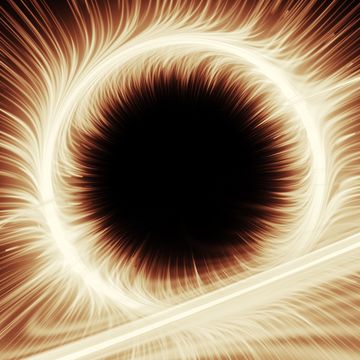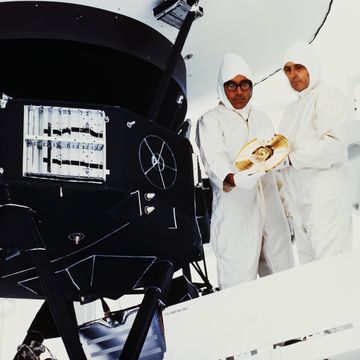Galaxy collisions are the largest and most intricate choreography of matter ever performed in the universe. Billions of stars swirl together and fly apart, supermassive black holes collide and combine, and nebulas of gas collapse into thousands of new stars. It's a dance that takes billions of years to complete, and it's happening thousands of times over all across the universe.
Using the ALMA radio telescope in Chile, scientists have spotted what they believe to be the largest galaxy merger ever discovered. The two galaxies, collectively called ADFS-27, are both incredibly bright and massive, what scientists call 'superluminous starburst galaxies.' They are also ancient, situated 12.7 billion light-years away, making them among the oldest galaxies in the universe.
"Finding just one hyper-luminous starburst galaxy is remarkable in itself. Finding two of these rare galaxies in such close proximity is truly astounding," said Dominik Riechers, lead author of a new study in the Astrophysical Journal. "Considering their extreme distance from Earth and the frenetic star-forming activity inside each, it's possible we may be witnessing the most intense galaxy merger known to date."
ADFS-27 owe their incredible brightness to an earlier sideswiping collision, which triggered an intense burst of star formation. These two galaxies, each more than a dozen times the size of the Milky Way, are pumping out new stars around a thousand times as fast as our own galaxy.
Astronomers believe that the two galaxies are massive enough that one day they could form the core of a new galaxy cluster. Galaxy clusters are groups of hundreds or thousands of galaxies all revolving around a common center, in this case ADFS-27. Follow-up observations with other telescopes could confirm whether starting a galaxy cluster is in the cards for ADFS-27.
"Eventually, we hope to combine the exquisite ALMA data with future infrared observations with NASA's James Webb Space Telescope," says Riechers. "These two telescopes will form an astronomer's 'dream team' to better understand the nature of this and other such exceptionally rare, extreme systems."
Source: National Radio Astronomy Observatory
